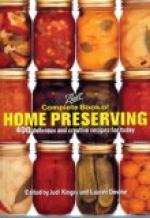WASHING WOOLENS
Woolens must never hang in the sun nor near the fire, as the too-quick drying causes them to shrink and harden. When nearly dry, press on the wrong side with a moderately hot iron. The rinsing water may be used for the first cotton wash. If both colored and white flannels are to be washed, the former should be done first, thus avoiding the lint washed from the latter. Drying can be accelerated by pressing repeatedly between soft cloths. If the ordinary washing fails to remove any of the spots, spread on a smooth board and rub with a soft, wet, soapy brush.
WASHING THE WHITE CLOTHES
Next comes the washing of the table linen, then the body linen, and then the bed linen, the process for each being the same, though the table linen requires the least rubbing. Wash in hot water in which the hand can be comfortably borne, soaping each piece well before it is rubbed, and paying particular attention to the hems of the sheets; drop into a second tub of clear, hot water, rinse, and wring into a boiler about half filled with cold water to which has been added one tablespoon of kerosene and sufficient soap chips to produce a good suds. Bring the water to a boil and boil ten minutes, stirring occasionally with the clothes stick, Too long boiling yellows the clothes, and crowding the boiler is to be avoided. From the boiler the clothes are lifted to a tub of clear, cold water, thoroughly rinsed, transferred to the tub of bluing water where they are well and evenly saturated, wrung out, and those which are not to be starched hung on the line where sun and breeze are most active. The bluing must be thoroughly mixed with the water. Clothes which have been carefully washed and rinsed need but little bluing. Hang sheets and tablecloths out straight and stretch the selvages even. Pillowcases should be hung by the seam opposite the hem.
STARCH
Prepare the starch by dissolving one half cup of starch in cold water, pour on this one quart of boiling water, and boil till clear and white, stirring constantly. When nearly ready to take from the stove add a little borax, lard, butter, or white wax. A teaspoonful of granulated sugar is believed by many to be the most desirable addition. This will be of the right consistency for ordinary articles—skirts,




